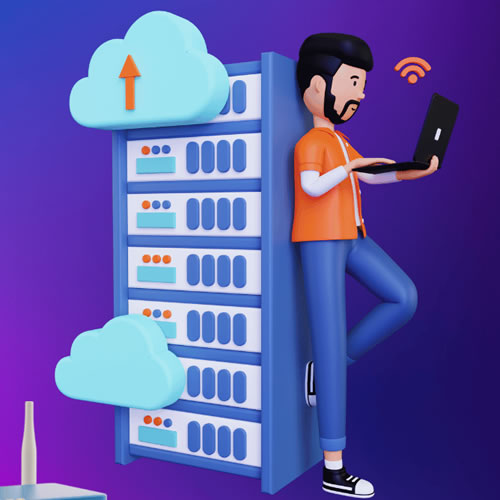F5 Load Balancer
Master F5 Load Balancer -Ensure High Availability & Performance.
Get hands-on training with real-world scenarios and expert guidance.

F5 Load Balancer Training focuses on equipping IT professionals with the skills to configure, manage, and troubleshoot F5 BIG-IP products — mainly used in enterprise-level traffic distribution, high availability, application acceleration, and security.
This course is essential for Network Engineers, System Admins, DevOps Engineers, Cloud Architects, and Security Professionals aiming to master advanced traffic management and application delivery.


β Networking Fundamentals Required – TCP/IP, OSI Model, Subnetting
β Linux CLI Comfort – Useful for troubleshooting and scripting
β F5 Simulator (Virtual Lab) – Set up using BIG-IP VE for hands-on practice
β Certifications Roadmap – F5 101 (Application Delivery Fundamentals) → F5 201 (BIG-IP Admin)
β Pair with Skills Like – Cisco CCNA/CCNP, AWS, Firewall Management (Palo Alto/Checkpoint)
| Benefit | Description |
|---|---|
| βοΈ Enterprise Skillset | F5 is widely used in data centers, financial services, telecom, and MNCs |
| π High Availability & Scalability | Learn to distribute application load across multiple servers |
| π Security Integration | Learn how F5 integrates with firewalls, SSL offloading, and WAFs |
| βοΈ Cloud Compatibility | F5 supports AWS, Azure, and hybrid cloud deployments |
| π― Job Focused | Opens doors to roles like ADC Engineer, Network Admin, Security Engineer |
| π Certification Path | Prepares you for F5 Certified BIG-IP Administrator (201) |
Beginner-level course
Ideal for network admins & freshers
Topics:
Introduction to F5 BIG-IP architecture
Basic LTM (Local Traffic Manager) functions
Traffic management & virtual servers
Pools, nodes, monitors, profiles
Intermediate level
Focus on:
SSL offloading
Persistence (Sticky Sessions)
Load balancing methods (Round robin, Ratio, Least connections)
Profiles & monitors customization
Troubleshooting tools (tcpdump, logs, statistics)
For large-scale or global deployments
Covers:
Intelligent DNS routing
Data center redundancy
DNSSEC, LDNS probing
Application Layer Firewall
Covers:
Web Application Firewall (WAF)
OWASP Top 10 threat protection
Policy building and attack mitigation
Secure remote access and SSO integration
Integrates with Active Directory, RADIUS, LDAP
VPN & identity access control features
Custom traffic management using iRules (TCL scripting)
Automate app services using iApps templates
DevOps-focused configuration automation
F5 101 – Application Delivery Fundamentals (Entry Level)
F5 201 – TMOS Administration
F5 301a/301b – Advanced LTM Specialist
F5 401 – Security Solutions Expert
What is a Load Balancer?
Introduction to Application Delivery Controllers (ADC)
F5 BIG-IP Product Overview
Types of Load Balancing (L2/L3, L4, L7)
Licensing, provisioning & initial setup
Navigating the BIG-IP GUI & TMSH CLI
VLANs, Self IPs, and Routes Configuration
Node, Pool, Virtual Server Configuration
Round Robin, Least Connections, Ratio methods
Health Monitors (HTTP, TCP, HTTPS, ICMP)
What is iRules?
Writing iRules for traffic inspection and redirection
Basic TCL scripting
SSL Profiles & Certificate Installation
OneConnect, Cookie Persistence, Source IP Persistence
Troubleshooting SSL Issues
Web Application Firewall (WAF) Basics
DoS Protection
Integration with Authentication Protocols (LDAP, RADIUS, SAML)
F5 Deployment in AWS/Azure
High Availability (Active-Standby)
Device Group Sync, Failover Configuration
Logging, Stats, and Analytics
Using tcpdump, Wireshark
F5 101 & 201 Exam Overview & Practice Scenarios
What is a load balancer and why is it important?
What are the different types of load balancing methods in F5?
What is a Virtual Server in F5?
How do you configure a health monitor?
What is the purpose of an iRule? Give an example.
How is persistence different from load balancing?
How do you troubleshoot traffic not reaching the backend server?
How do you configure SSL offloading on F5?
What are the steps for HA (High Availability) configuration in F5?
F5 101 + LTM Essentials + Labs
F5 101 + 201 + 301a + 301b
F5 ASM + APM + WAF Labs
LTM + Automation + iRules + Terraform + CI/CD Integration